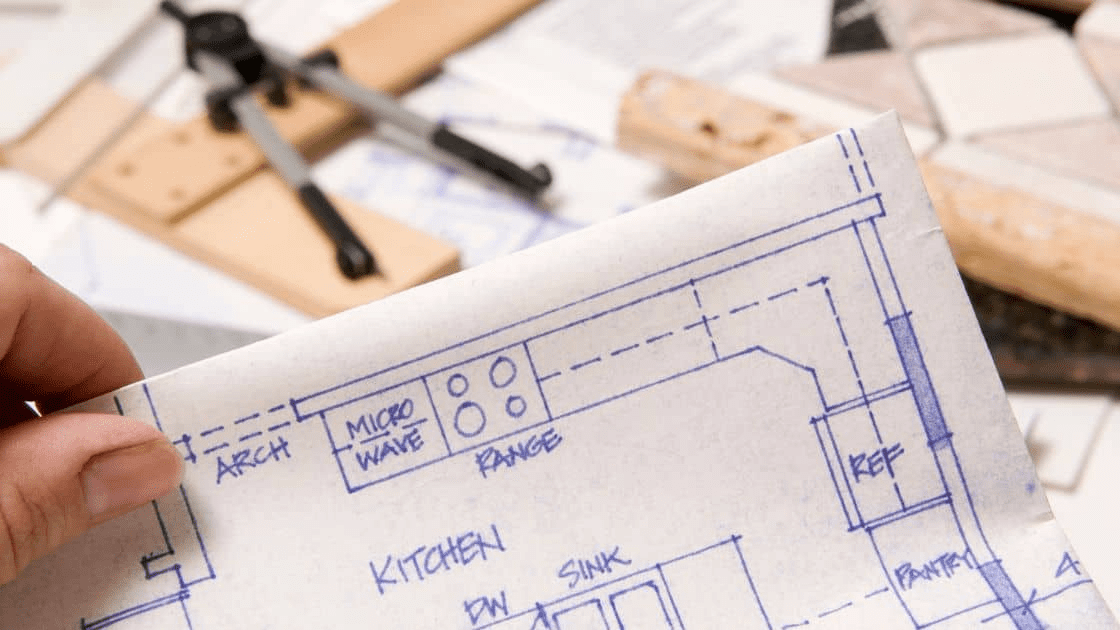By / OVM TEAM
How to Plan a Successful Moving and Renovating Project
Did you know that moving is considered one of life’s most stressful events? Now imagine combining that with a home renovation project, and you’ve got a recipe for potential chaos. Fear not, as we’re here to guide you through planning a successful moving and renovating project, ensuring a smooth transition to your new space while avoiding common pitfalls. Let’s dive in!
Key Takeaways
Weigh the pros and cons of moving vs. renovating to make an informed decision
Plan ahead for a smooth transition, including budgeting and acquiring packing supplies
Consider DIY projects or hiring professionals when planning a home renovation project
Weighing the Pros and Cons of Moving vs. Renovating

Weighing the costs, time, and potential disruptions is crucial when you are considering whether to move or renovate. Moving to a new house can be an expedient choice and offer a fresh start, especially when using a reputable moving company. However, home renovations can give you the freedom to choose desired features and ensure quality craftsmanship.
On the flip side, major renovations may require temporary relocation, adding stress and inconvenience to the process. Additionally, unforeseen issues during renovation projects can lead to budget increases, making it essential to research contractors and consult professionals for legal, accounting, and tax matters.
When deciding between moving and renovating your existing home, evaluating the advantages and drawbacks of both options is crucial.
Preparing for a Smooth Transition

A smooth transition begins with gathering vital information about the moving and renovating process, such as professional moving services, costs, timelines, and required permits or inspections. Considering many homeowners face challenges during the moving process, you should create a timeline, list out items to be moved, and establish a budget in advance.
Next, we will discuss packing supplies and hiring professional movers, both integral to a successful move.
Packing Supplies
Numerous packing supplies are necessary for a move, including boxes, packing tape, box cutter, stretch wrap, labels, permanent markers, packing paper, scissors, and plastic bags. There are various types of moving boxes available, such as small, medium, and large moving boxes, wardrobe boxes, dish pack boxes, mirror boxes, mattress boxes, and lamp boxes, each serving its own purpose.
If packing seems overwhelming, consider hiring a moving company like TWO MEN AND A TRUCK, which offers packing services where their experienced movers can pack your items with the utmost care. This way, you can focus on other aspects of your move or renovation project.
Hiring Professional Movers
Engaging professional movers can help alleviate stress and ensure your belongings safely reach your new location. When booking moving services, it’s important to research the company and check their rating on the Better Business Bureau to guarantee a reputable and trustworthy team.
Professional movers offer various services, such as:
Packing
Loading
Unloading
In-house moves
Furniture rearrangement during single-room or whole-house renovations
Hiring experienced movers lets you focus on other aspects of your move or renovation, knowing your valuables are in good hands.
Financing Your Move or Renovation

Relocating to a new residence can involve various costs, such as apartment move-in fees, professional movers, and local moving expenses, which can fluctuate depending on the location and distance of the move. To finance your move or renovation project, consider exploring options like unsecured personal loans, moving loans, or bridge financing.
Consulting an advisor can help you determine which financing option is most suitable for your situation. Assessing your financial needs and capabilities will allow you to confidently proceed with your moving or renovation project without straining your budget.
Navigating the Real Estate Market

Researching market conditions and consulting a real estate agent is essential before listing your house for buying or selling. Real estate agents can offer invaluable support during the sales process, provide neighbourhood and home information, and act in your best interests, guiding you through the entire home-buying process, including determining the appropriate purchase price.
To accurately price a house for selling in the current real estate market, conducting a comparative market analysis (CMA) with the help of a real estate agent is highly recommended. Understanding the real estate market and seeking professional advice will enable you to make informed decisions, ensuring the best outcome for your property sale or purchase.
Planning a Home Renovation Project

Planning a successful home renovation project involves obtaining permits, setting a budget, and creating a timeline for completion. It is crucial to identify and rectify any errors in the planning stage to prevent costly mistakes during the remodelling process.
Next, we will discuss the significance of permits and inspections and the choice between DIY projects and hiring professionals.
Permits and Inspections
Acquiring permits is the initial step in a house renovation project, ensuring compliance with local building codes and regulations. Typical building permits required for home renovation include:
Construction permits
Renovation permits
Electrical permits
Plumbing permits
Mechanical permits
When applying for a building permit, follow the necessary steps:
Obtain an application form.
Fill out the application form accurately.
Prepare two sets of plans or drawings.
Pay the required fee.
Submit the application for review and approval.
Acquiring permits and completing inspections not only ensures the safety and integrity of your renovation project but also prevents potential legal issues down the line.
DIY vs. Hiring Professionals
Deciding between DIY projects and hiring professionals for your home renovation depends on the complexity of the tasks at hand. Common DIY projects include painting walls, installing new flooring, upgrading kitchen cabinets, and adding a garden or outdoor space. However, more intricate tasks, such as planning and design, construction, weatherproofing, electrical and plumbing work, and major structural changes, often require professional assistance.
Taking on a complex DIY renovation project can be time-consuming, costly, and even dangerous if you lack experience. Accurately assessing your skills and the project’s requirements will help you make informed decisions about which tasks to take on yourself and when to call in the experts.
Making the Most of Your New Space

Maximizing the potential of your new space involves considering layout, functionality, and design elements that suit your needs and preferences. Select furniture pieces suitable for small apartments, utilize sectional sofas, and consider multi-purpose furniture to make the most of your space. Also, take advantage of clever storage solutions and plan the layout and arrangement of furniture to create a harmonious living environment.
Lighting plays a vital role in creating a spacious and welcoming atmosphere. Here are some tips to maximize light in your space:
Open windows and use sheer curtains to let in natural light
Incorporate recessed and track lighting to save space
Use mirrors to reflect light and create the illusion of a larger space
Careful planning and design of your new space will result in a comfortable and functional living environment tailored to your needs, providing more space.
Coping with the Stress of Moving and Renovating

Moving and renovating can cause stress, anxiety, depression, loneliness, and a sense of being overwhelmed. To manage these psychological effects, practice self-care, seek support from others, maintain a daily routine, communicate openly, and take regular breaks and rest.
Feeling stressed during this process is normal, but taking care of yourself and staying organized can help you navigate the challenges of moving and renovating successfully.
Moving and Renovating with a Growing Family

Moving and renovating with a growing family presents unique challenges and opportunities, such as logistical, spatial, financial, and emotional considerations. On the upside, relocating with a large family offers the chance to explore new areas, find more suitable schools, and create a home that meets your family’s needs. When designing functional spaces for a large family, consider the requirements of each family member and plan for separate and shared spaces.
Ensuring a smooth transition for a large family involves:
Planning ahead and staying organized
Packing and labelling boxes
Creating a timeline for the move
Involving the whole family in the process
Addressing the unique challenges of moving and renovating your current house with a growing family can lead to the creation of a comfortable and functional space for everyone to enjoy, including the installation of new doors.
Common Moving and Renovating Mistakes to Avoid

Learning from common moving and renovating mistakes can help you avoid potential pitfalls and ensure a successful project outcome. Moving mistakes, such as neglecting to plan ahead, failing to secure proper packing materials, and not taking adequate safety precautions, can lead to delays, damaged belongings, increased costs, disorganization, and safety risks. Renovation mistakes, on the other hand, can result in compromised safety, inconsistent design, delays and budget overruns, decreased property value, and structural damage.
Being aware of these common mistakes and preventing them can instill confidence as you proceed with your moving and renovating project, ensuring a smooth transition to your new space.
Summary
In conclusion, planning a successful moving and renovating project involves weighing the pros and cons, preparing for a smooth transition, exploring financing options, navigating the real estate market, and considering the needs of a growing family. By staying organized, setting realistic expectations, and learning from common mistakes, you can create a comfortable and functional space that meets your needs and preferences. Remember, the key to a successful move and renovation lies in careful planning and a positive mindset. Happy moving and renovating!
Frequently Asked Questions
Should I renovate before moving in?
It’s often better to renovate your kitchen before moving in, particularly if it’s outdated, cramped or in need of repair. This will help you understand the flow and feel of your home before making design plans.
How long should I wait to move in after renovation?
In general, two months of waiting time should be allowed after the completion of renovation activities, such as painting and laying carpets, before moving in. It is important to keep track of your progress to ensure there are no delays.
Does it make sense to renovate a rental?
Renovations can result in “forced appreciation” and significantly increase the value of a rental, so it certainly makes sense to renovate.
Where do I start when renovating my old house?
Begin your renovation project with the kitchen, which is an important and often disruptive space to update.
What factors should I consider when deciding between moving and renovating?
When deciding between moving and renovating, weigh the financial costs, time investment, and any potential disruptions with the advantages and disadvantages of each option.






